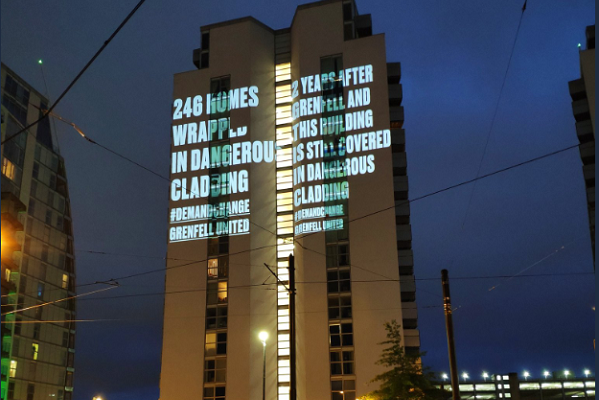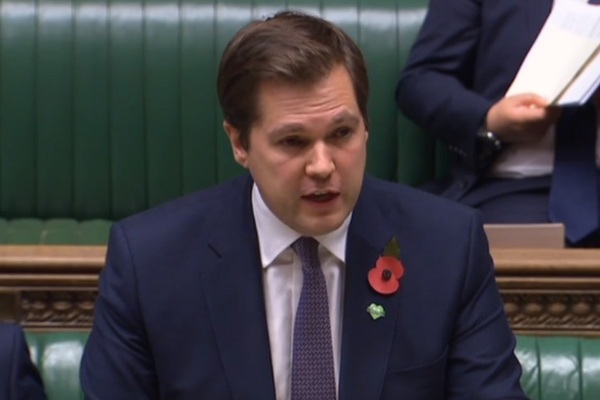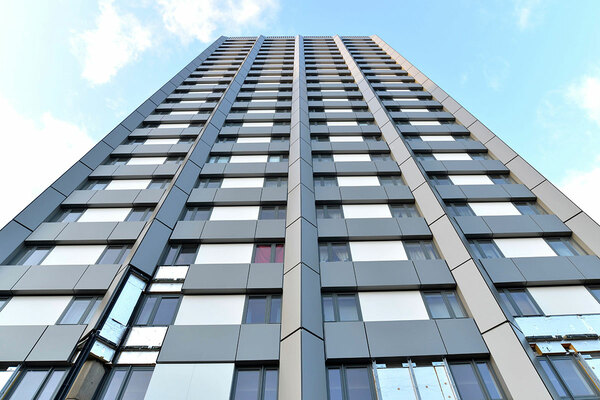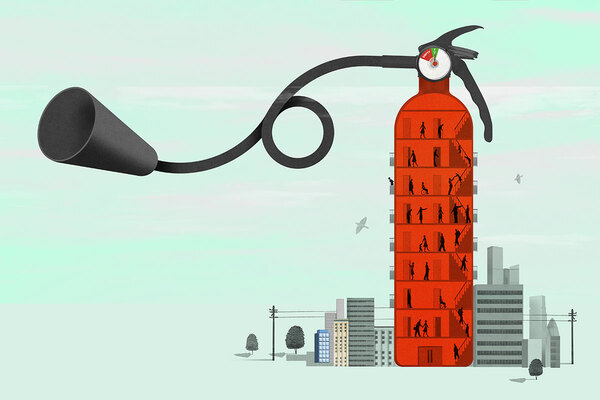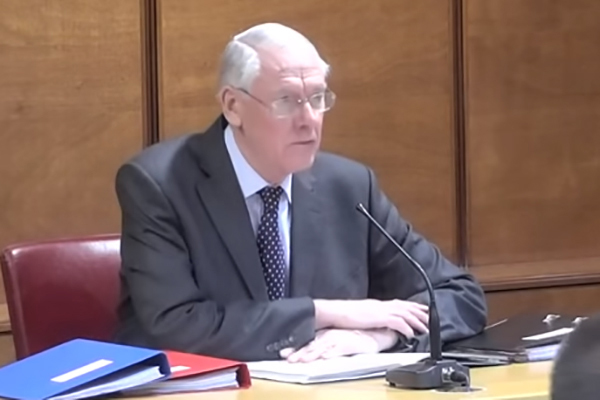You are viewing 1 of your 1 free articles

Nine steps for social landlords following the Grenfell Tower Inquiry report
The sector does not need to wait for legislation to act on the Grenfell Tower Inquiry report. Debbie Larner explains the actions that can be taken today
Last month Dame Judith Hackitt stated: “Trades and professionals working on higher-risk residential buildings need to push ahead with plans to improve competences without waiting for government to introduce new regulations.”
Last week, the first phase report from the Grenfell Tower Inquiry was published. This deals mainly with the response to the fire, including the actions of the emergency services. However, there are recommendations within the report that will have an impact on those who own, manage and live in high-rise residential buildings.
So, the key message from both the Hackitt Review and the inquiry is that change is coming – and we need to prepare for it now.
However, we know that this will come at a significant cost – the G15 recently calculated that the total cost of making buildings fire-safe could be as much as £6.9bn.
In addition, the early adopters group has estimated that ongoing costs of implementing the new regulatory system could be as much as £90,000 per building in scope per year.
In our submission to the summer consultation – ‘Building a safer future’ – we called on government to create a building safety fund to support the remediation works on existing buildings.
This was in part to recognise the systemic failure of the previous building safety regulations, and to safeguard from money being diverted away from developing much-needed new supply.
That said, it is imperative that the homes that people live in are safe. This is being taken very seriously across the sector, and many organisations are investing millions into works to ensure that buildings are safe.
While we await the government’s response to the consultation, it is clear that many of the recommendations proposed will be adopted. So, it is not too early to start to prepare for the new regime we know is coming down the line fairly soon. In doing so, we recommend nine steps:
1. Determine the safety of your existing buildings in scope and carry out remedial works as required
Don’t assume that your buildings are safe. Many organisations are now working with fire engineers to determine the compliance of existing buildings – many have been found to be “unsafe” and urgent works are being undertaken to ensure they are safe.
Consider undertaking Type 4 fire risk assessments. Develop an active asset management strategy to prioritise works. Remember to take account of Advice Note 14 and other subsequent advice notes relating to balconies and timber cladding in particular.
2. Assess the need for fire suppression systems
Carry out risk-based reviews on individual blocks to determine the efficacy of retrofitting appropriate fire suppression systems. This should include consultation with residents. Be transparent about the findings of each risk assessment so that residents can clearly understand why decisions were made – including any specific reasons not to retrofit.
3. Review business plans
Government has announced a new cross-agency ‘protection board’ to oversee high-rise building and fire safety until the new building safety regulatory regime is fully operational, which it could be fairly soon. As stated above, the costs associated with both remedial work and ongoing costs are going to be significant. You will need to review business plans to account for both short-term and longer-term costs associated with the new regime.
4. Develop a training and awareness strategy
It will be important to train all staff to raise awareness. Boards and executive teams will need to understand their core responsibilities and liabilities in relation to strategic fire safety. This tier will need to drive the culture of the organisation to embed fire safety across it.
Frontline staff will need the knowledge and awareness to understand the key risks associated with fire safety in their day-to-day roles and the ability to understand what remedial action needs to be taken/escalated.
5. Decide which buildings will be in scope under the new regime
You will need to assess which buildings are in scope under the revised definition of 18 metres. You may also want to consider whether to include other buildings based on the risk and vulnerability of the residents.
6. Determine who will be the accountable person for each building in scope
An ‘accountable person’ must be identified for each building in scope. This could be a body corporate but, where this is the case, a named individual at board level would be ultimately responsible for fire and structural safety in the building. Accountability cannot be transferred, and the accountable person would have to be registered with the regulator.
7. Plan for the introduction of the building safety manager
Consider the skills, behaviour and knowledge you currently have (mapped against the draft competency framework) in your organisation – who might do this role? How much would be delivered in house? How much would need to be contracted out? What would need to be in the job description and person spec? How many buildings in scope would the building safety manager cover?
8. Start to collate information for the safety cases
The information you will be required to provide will be prescribed and the consultation document gives a good idea of the type of information you should start to bring together now. Where there are gaps, you will need to either understand how you will get the information required or make a case to the regulator for why it would not be proportionate to do this.
9. Begin to develop your resident engagement strategies
It is likely that you will have all the information required already. What will be required is detailed in the consultation. Start pulling this together into a cohesive strategy for each of the buildings in scope.
It should also be noted that under the proposals, residents will have a key role in keeping their buildings safe with a clear obligation to co-operate with the “accountable person” and building safety manager to keep the building safe.
We are developing a range of products and services to ensure that organisations have the knowledge and expertise to ensure that the homes that people live in are safe now and in the future. Please do get in touch if you want to know more about how we can help. The specific recommendations for building owners and managers are summarised below.
Debbie Larner, head of practice, Chartered Institute of Housing
Grenfell Tower Inquiry: recommendations relating to building owners and managers
The following recommendations made in the Grenfell Inquiry are focused on building owners and managers – it is not clear at this stage what will be mandated in legislation and whether this will be amalgamated into the proposed legislation to implement Hackitt recommendations.
However, these practical recommendations can be implemented prior to any new regulations/ legislation
- draw up and keep under review evacuation plans, with copies provided to local fire and rescue services and placed in an information box on the premises
- in addition, prepare personal evacuation plans for residents who may struggle to do so personally, with information about them stored in the premise’s information box
- carry out urgent inspections of fire doors in all buildings containing separate dwellings, whether or not they are high rise
- check doors at least every three months to ensure self-closing devices are working effectively
- ensure all high-rise buildings have floors clearly marked in a prominent place, which would be visible in low light or smoky conditions and in a means that residents can understand
- provide details of external walls and the materials used to the local fire service, and inform them of any change
- provide paper and electronic versions of building plans of all high rises to local fire services
- provide every building with a premises information box, including a copy of floor plans
- carry out regular inspections of any lift required for use by firefighters and the mechanism that allows them to take control of it
Grenfell Tower Inquiry: full coverage
Evacuation plans should be developed for all high-rise buildings, says Grenfell Inquiry judge
Sir Martin calls for landlords to develop evacuation policies on all high-rise buildings as well as recommending an “urgent” inspection of fire doors in all properties.
Click here to read the full story
Grenfell Tower Inquiry: the recommendations
A full list of Sir Martin’s 17 recommendations, including calls for building owners to install facilities to give evacuation signals to tenants and cladding removal work to be completed “as vigorously as possible”.
Click here to read the full story
Grenfell Inquiry: ACM cladding was ‘primary cause of fire spread’ and tower did not comply with regulations, judge rules
The judge leading the Grenfell Tower Inquiry has ruled that the cladding installed on the tower did not comply with building regulations, finding that the polyethylene-cored panels were the “primary cause” of the rapid spread of flames.
Click here to read the full story
Grenfell Inquiry: round-up of Sir Martin Moore-Bick’s phase one conclusions
How the fire started, why the fire spread, what was the response from the fire brigade, emergency services and Kensington and Chelsea Tenant Management Organisation, all covered in our round-up of the Sir Martin’s conclusions.
Click here to read the full story
Grenfell Inquiry report: stay put ‘an article of faith’ within LFB
The inquiry judge criticises the London Fire Brigade’s “reluctance to believe that a building wouldn’t comply with building regulations” and claims that many lives would have been saved if the incident commander told residents to evacuate earlier.
Click here to read the full story
KCTMO chief criticised for ‘passive role’ and ‘ineffective leadership’ on night of Grenfell fire
Former chief executive of the Kensington and Chelsea Tenant Management Organisation was labelled as “essentially detached” from events on the night of the fire by Sir Martin. The company was also criticised for not passing on crucial resident information to the fire brigade.
Click here to read the full story
Grenfell Inquiry: ACM cladding was ‘primary cause of fire spread’ and tower did not comply with regulations
Despite saying that he would try not to deal with the make-up of the building in his phase one report, Sir Martin decided to make an early finding that the building breached headline regulation. He also ruled that the building suffered “total failure of compartmentation”.
Click here to read the full story
Grenfell Inquiry reaction: survivors call for implementation timeline for recommendations
Survivors group Grenfell United calls for fire service bosses to “face consequences” for failings leading up to the fire, while the London Fire Brigade, National Housing Federation and Royal Borough of Kensington and Chelsea also respond
Click here to read the full story
Recommendation rejected by Pickles as ‘disproportionate’ in 2013 repeated in Grenfell Tower Inquiry
Story reveals that as communities secretary Eric Pickles was given a recommendation after the Lakanal House Fire to ensure all high-rises “provide relevant information on or near premises” but branded a move to implement “unnecessary and disproportionate”
Click here to read the full story
Grenfell judge calls for Johnson to implement Grenfell Inquiry recommendations ‘without delay’
Grenfell judge calls for Johnson to implement Grenfell Inquiry recommendations ‘without delay’ In a letter to prime minister Boris Johnson before the inquiry was published, report author, Sir Martin Moore-Bick, calls on PM to implement inquiry recommendations “without delay”.
Click here to read the full story
Government to implement Grenfell Inquiry recommendations ‘in full’ and provide funding
Robert Jenrick, housing secretary, promises to bring in all of Sir Martin’s recommendations “without delay” and also guarantees government will pay for changes.
Click here to read the full story
Government to implement Grenfell Inquiry recommendations in full
Ministers will implement recommendations put forward in the Grenfell Tower Inquiry’s first report “in full” and “without delay”, housing secretary Robert Jenrick has confirmed.
Click here to read the full story
Stay Put: where did it come from and where do we go next?
“Stay put had become an article of faith and to depart from it was unthinkable.” These are the words of Grenfell Inquiry judge Sir Martin Moore-Bick. Peter Apps looks at where the idea came from and where we go now.
Click here to read the full story
Is your approach to fire safety reliant on faith in the system or good judgement?
The Grenfell Tower Inquiry report suggests that housing providers and the fire service have not been willing enough to plan for worst-case scenario fires in high-rise buildings. Martin Hilditch outlines how the inquiry’s report should guide thinking and practice

